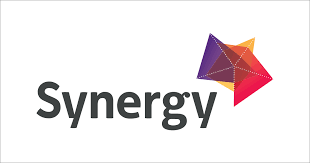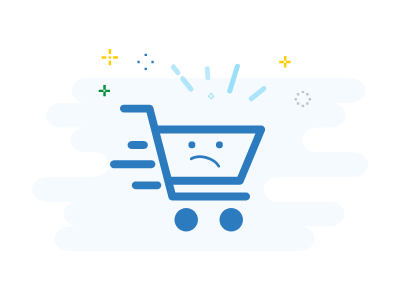Lean Six Sigma in Utility Sector
Why apply Lean Six Sigma in Utility Sector?
The utility sector is about the production and distribution of essential amenities, i.e. gas, electricity and water, to the general public and industry. Utility businesses play an important role in a society’s economic and social development and are highly regulated by the government. The production and distribution network of utilities are capital intensive. The infrastructure for distribution is very extensive, covering the length and breadth of a country. All these assets require regular maintenance to keep them in good working order and avoid unnecessary losses, e.g. leakage or spillage.
Utility businesses involve wholesale and retail sales, the end consumer being members of the public. While the production of gas, water and electricity is concentrated in relatively few plants and companies, retailers of utility are numerous by comparison, competing against each other for customers in the open market. Customer service and satisfaction, and hence loyalty, are very important. Customers expect responsive service and reliable supply with negligible interruptions.
Lean Six Sigma (LSS) is a business improvement methodology founded on a set of principles with data-based decision-making. Data gathering and analytical tools are applied systematically to improve a process to a higher performing level.
In the utility retail market, LSS can help to reduce wait time in resolving customer issues and reduce downtime in supply interruptions by increasing reliability and decreasing response time in fixing problems. In the production plants and distribution infrastructure, LSS enables the highest asset utilisation for maximum profitability while maintaining a safe work environment and meeting government regulations.
For utility businesses, LSS improves efficiency at the process level. When the right areas for improvement are targeted, the cumulative benefits at the business level are:
- Increased profits
- Higher customer satisfaction / shorter response time
- Reduced costs
- Higher productivity and asset utilisation
- More reliable supply/fewer interruptions or downtime
- Safer and well-organised work environment
What are the key principles of Lean Six Sigma?
Lean Six Sigma defines value through the eyes of the customer. In the utility sector, the ultimate customer is the external consumer of gas, electricity or water, with internal customers being the recipients of the outputs of each operation in production, distribution, sales and administration.
In the utility sector, the key principles of LSS may be expressed as follows:
- Focus on your customer: Price differences between retailers of gas, electricity and water are negligible, if they exist at all, as the industry is highly regulated to protect consumers. Identify and meet the needs and wants of the retail customer, other than price. The requirements of the internal downstream customer should be well understood and consistently delivered.
- Identify your value stream: Map out your existing value stream, showing every single process step, in the chosen area for improvement, from production to distribution.
- Eliminate waste and/or defects: Remove any non-value adding activities or opportunities for errors or losses in your production, distribution and support operations.
- Maintain momentum: Sustain improvements by communicating new standards and practices clearly, training employees and having an open dialogue.
- Create and sustain a culture of continuous improvement: Nourish a culture of welcoming change and encouraging flexibility among employees who are encouraged to continually find ways to streamline processes and eliminate waste and defects, thereby increasing overall business profitability.
How is Lean Six Sigma applied in theUtility sector?
LSS focuses on removing waste, decreasing process variation and reducing defects at each process step from production to distribution of gas, electricity and water.
LSS is essentially about accelerating flow with Lean tools and decreasing defects or process variation with Six Sigma tools. Value stream mapping identifies the waste and value in the current process and is performed by directly observing people and operations and talking with staff on the production site, in the distribution network and/or in support functions such as customer service, maintenance and administration. Waste can be categorised as defects (errors), overproduction, waiting for an equipment/ tool/ document or person, non-utilised talent, transporting of items, inventory, the motion of people and extra processing.
Considering the enormous size and complexity of the utility business, LSS is commonly applied at the operational level. Management targets the areas for improvement for the best return on investment and in accordance with the overall business strategy. The areas chosen for improving cost efficiency, asset utilisation, safety/ environmental risks or service quality should be those which will have the greatest impact on the overall business performance.
Some examples of how LSS is applied in utility sector are as follow.
- Reducing the number and severity of safety incidents and minimising the safety risk to the public, employees and contractors.
- Minimising waiting time to speak with a customer or technical service person and ensuring phone and internet services are helpful, comprehensive and intuitive
- Maximising the correct responses (minimising errors) given to customer enquiries in the shortest response time
- Reducing the number and duration of power outages and minimising the impacts of those that may not be avoided
- Decreasing costs to customers by ensuring the accuracy of equipment, such as remote meter readings (minimising errors)
- Creating and managing maintenance schedules to improve or maintain the reliability and integrity of natural gas and water pipelines and electricity transmission lines
- Increasing efficiency and effectiveness of maintenance or emergency response crews by LSS training and implementing safe and well-organised, and adequately equipped workshops, stores and mobile equipment/ vehicles, as well as standardised work procedures.
- Improving efficiency and equipment reliability to minimise emissions and reduce costs in the plants producing gas, electricity or water.
- Minimising the consumption of water, fuel and other natural resources.
LSS is a systematic methodology that demands adequate statistical, visualisation, facilitation and project management skills. A team of well-trained staff members or consultants is essential for implementing changes and sustaining improvements, with the enthusiastic support of management. The initial implementation could be the creation of a core team of sufficiently trained in-house change agents or engaging a consultant.
Imagine you have successfully implemented LSS and have now clearly demonstrated operational excellence in your utility business. What could your improved business go on to achieve? What competitive edge would you have? How could you grow further? What if you could increase market share?
How can CBIS help you?
Please contact us if you need more details on how our expert team can assist you. We are simply experts in the application of Lean Six Sigma in the utility sector.
Complete Lean Six Sigma Consulting and Coaching Services from Expert Coaches and consultants.
Attending our Public classroom physically or joining the team virtually from anywhere, according to the training calendar.
A flexible self-paced training for busy people along with our support by a dedicated coach, to solve the disadvantage of one-way online training
Delivering flexible and tailored training for your team and at your premises as a cost-effective solution for your team.











